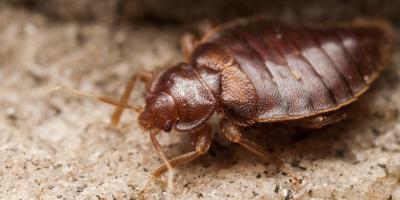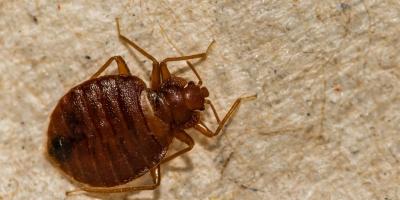Do Bed Bugs Have a Season?

If there’s one guest that neither homeowners nor business owners want to welcome through their doors, it’s bed bugs. Even though the itchy, scratchy, creepy, crawly critters pose little health risk, they’re still at the top of most people’s least wanted list. But, unlike many other pests that have seasonal cycles – think stinkbugs in the fall and silverfish in the winter – bed bugs are just as likely to show up on any of the 365 days in a year.
Bed Bugs: Bothersome Year-Round
Since bed bugs’ preferred habitat (your bedding) is anything but “natural,” weather and seasonal temperature changes don’t really affect these exclusively interior pests. Instead, their peak seasons align more closely with an altogether different force of nature – humans.
Bed bugs are more likely to spread during peak travel seasons, like summertime months and over the winter holidays. With so many vacationers coming and going – many unwittingly with these tiny tag-alongs in tow – hotels, lodges, cottages and even Airbnb accommodations can quickly become hotbeds of bed bug activity (pun intended).
That doesn’t necessarily mean your family is any more likely to get bed bugs during one time of year and less likely another, especially if you don’t follow the same travel schedule. What it does mean, however, is that you should be on the lookout for bed bugs whenever you’re in a situation where they could potentially be lurking, as it’s whenever you travel (or when others come to you) that the chances of them spreading goes up.
Beware of Potential Bed Bug Proximity
Whenever you travel overnight, you should always check the room you’ll be sleeping in for bed bugs, whether you’re staying at a five-star resort or a roadside motel (or, for that matter, with friends or relatives). Bed bugs don’t discriminate.
When you arrive at your lodging do not immediately unpack. Instead, stick your luggage in the bathtub, where they’ll be safe from any potential hitchhikers. Pull out a credit or debit card and fire up the flashlight on your cell phone. Dissect your bed like you’re investigating a crime – pull off all the sheets, blankets and pillowcases and inspect every nook and cranny.
What you’re looking for are small reddish brown dots or smears, about the size of an asterisk (*). They’ll often be in the shape of a diamond... that’s their excrement. Next, run your card along the seams. You’re looking to see if you turn up any husks – bed bugs’ discarded exoskeletons.
Once you’ve thoroughly examined the bed, don’t stop just yet. There are plenty more places where bed bugs could be hiding. Take a close look at carpets, curtains, drapes, upholstered furniture, nightstand drawers and other dark, tucked away places.
Even if the space seems to pass muster, there’s one more preventative measure you should take when you get back home: run all your clothes, plus any pillowcases, towels or other linens you took with you, through a hot dryer cycle. Don’t wash them first – doing so won’t kill, but only spread the bugs.
To learn more about bed bugs, as well as techniques to help keep them out of your home, check out our Bed Bugs 101 page.



